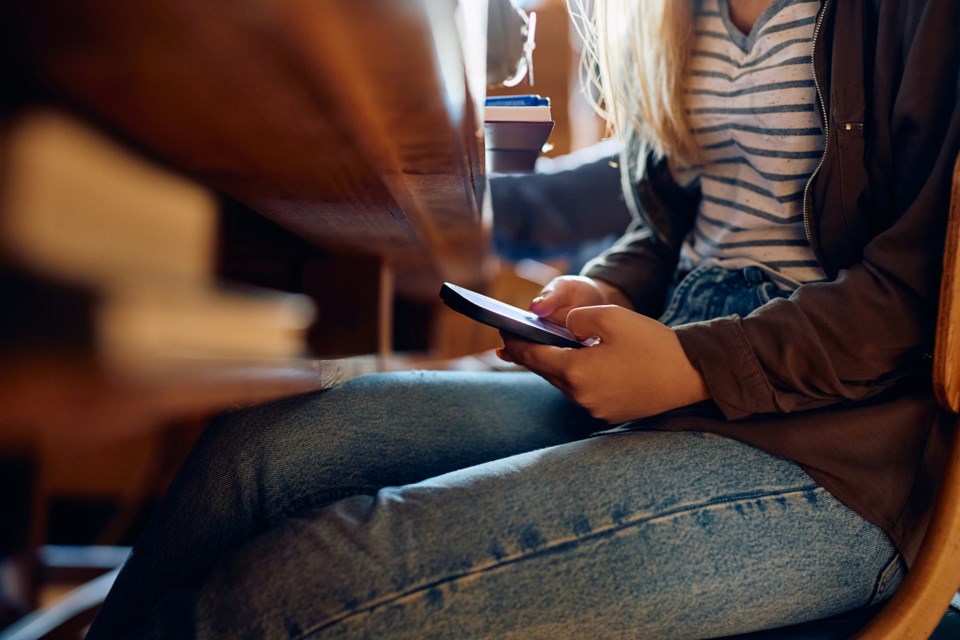TIMMINS - With students back in the classroom, work is ongoing to ensure they're dialled into learning instead of cell phones.
At yesterday’s (Sept. 10) District School Board Ontario North East (DSB1) school board meeting, the policy and procedures regarding the Ministry of Education’s mandates about cell phones during instructional time were presented to the board.
“It’s not just cell phones, it’s also smartwatches,” said superintendent Steve Pladzyk during the presentation. “Our focus is on ensuring there’s less distraction during instructional time. That really is the crux of this.”
The new rules mean students must keep their phones turned off or on silent and out of sight during class time.
Pladzyk said that some schools had procedures in place already that are stricter than the provincial mandate, so there may be discrepancies from school to school.
“This is the minimum standard,” he said. “If there is an established procedure, and there is no sense in changing it because it’s already been working.”
Parents are asked to remember the days of calling the school if a message had to get to a student during school hours.
“We’re asking parents not to text, send funny jokes, send other messages through social media,” said Pladzyk.
Students will receive a warning from the teacher if they use their phones during class. If they continue to use the device, they will be sent to the office and asked to hand over their device.
In primary school settings, they will get the device back at the end of the school day. In secondary schools, they can pick it up during lunch or after school.
Parents will be notified if the student does not hand over the device.
“The first week this year is kind of a grace week to get everyone used to the new guidelines and rules, and then this week is starting the reporting to the office process,” said Pladzyk.
The policy applies to teachers, other staff, and visitors to the school while on school property during class time.
“We want our staff to model the expectations within our classrooms,” he said during the presentation.
There are medical exemptions, such as students with Type 1 Diabetes who monitor their blood glucose levels with their phone, but education director Lesleigh Dye said there have not been any accommodations made for mental health concerns.
“We would already have that as a prevalent medical condition on file, and if they are using an app on their phone to track, for example, their sugar levels, we will allow them to have access,” she said. “We would ask them to do as they normally do.”
The school board will be addressing the mental health issues around this with apps on school iPads and accommodations that can be made through the school devices rather than personal ones.
“The kinds of supports that are being asked for can be accomplished through our iPads, so we have had in the past, students say ‘I’d like to listen to music’, and that’s been accommodated through the iPad, it doesn’t have to be done through a phone,” said Pladzyk.
There will also be mindfulness apps included on the iPad.
Pladzyk said during the meeting that things will be updated as issues arise, and educators will learn as they go.
“We will definitely be revising procedures as we go through the process of implementing the procedures as we pick up challenges or barriers that may come up,” he said.
Protecting students’ property and ensuring that confiscated phones are kept secure is also a priority.
“To ensure that there is not any blame given to someone for any potential damage or so someone doesn’t pick up the wrong phone, the student will put their own phone in a large manila envelope, they will write their name on the envelope,” he said. “The principal’s responsibility is to take that phone and put it in a secure location.”
